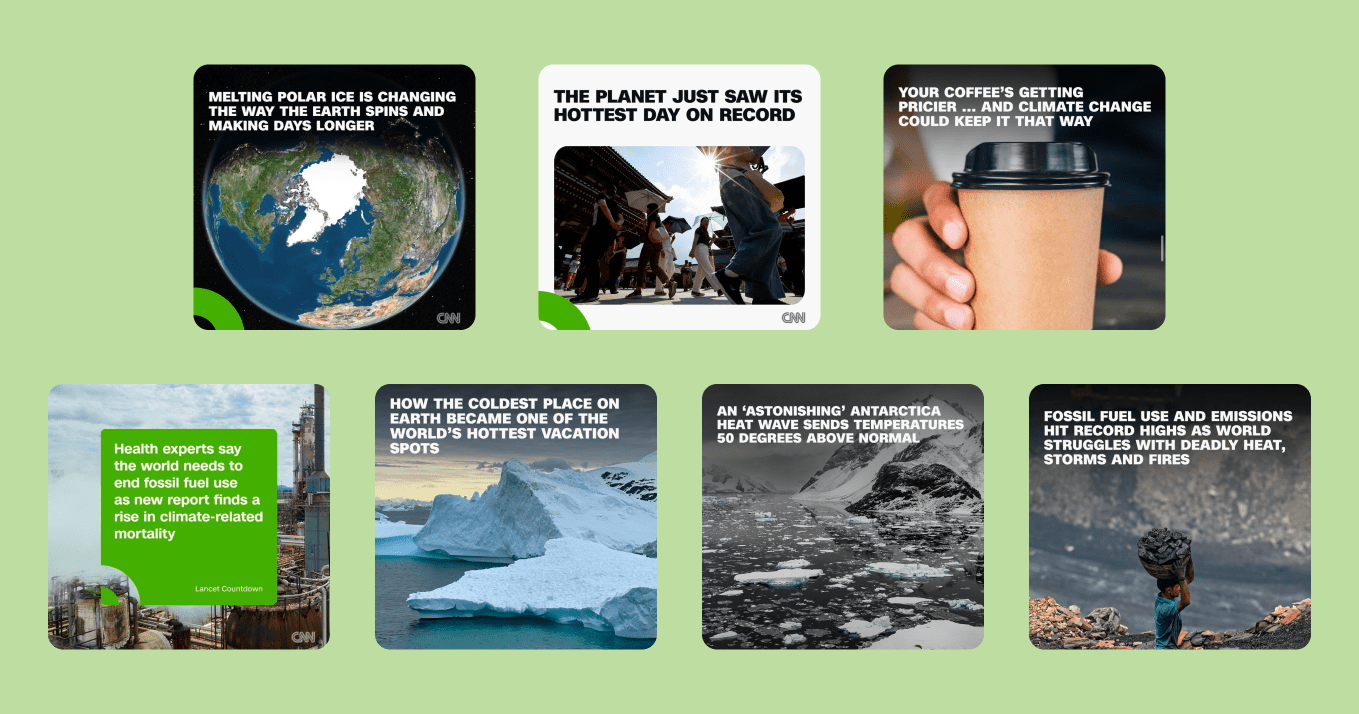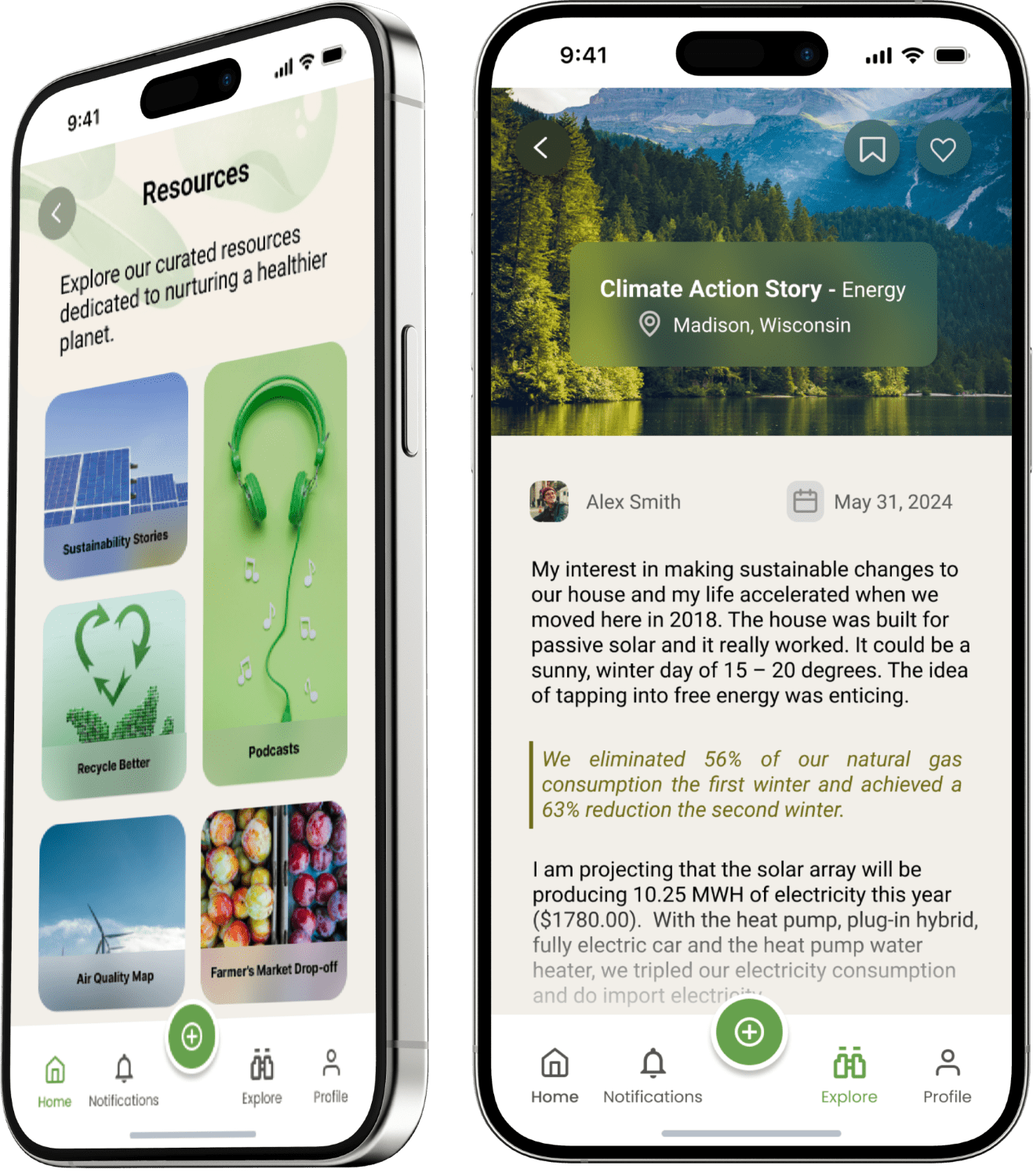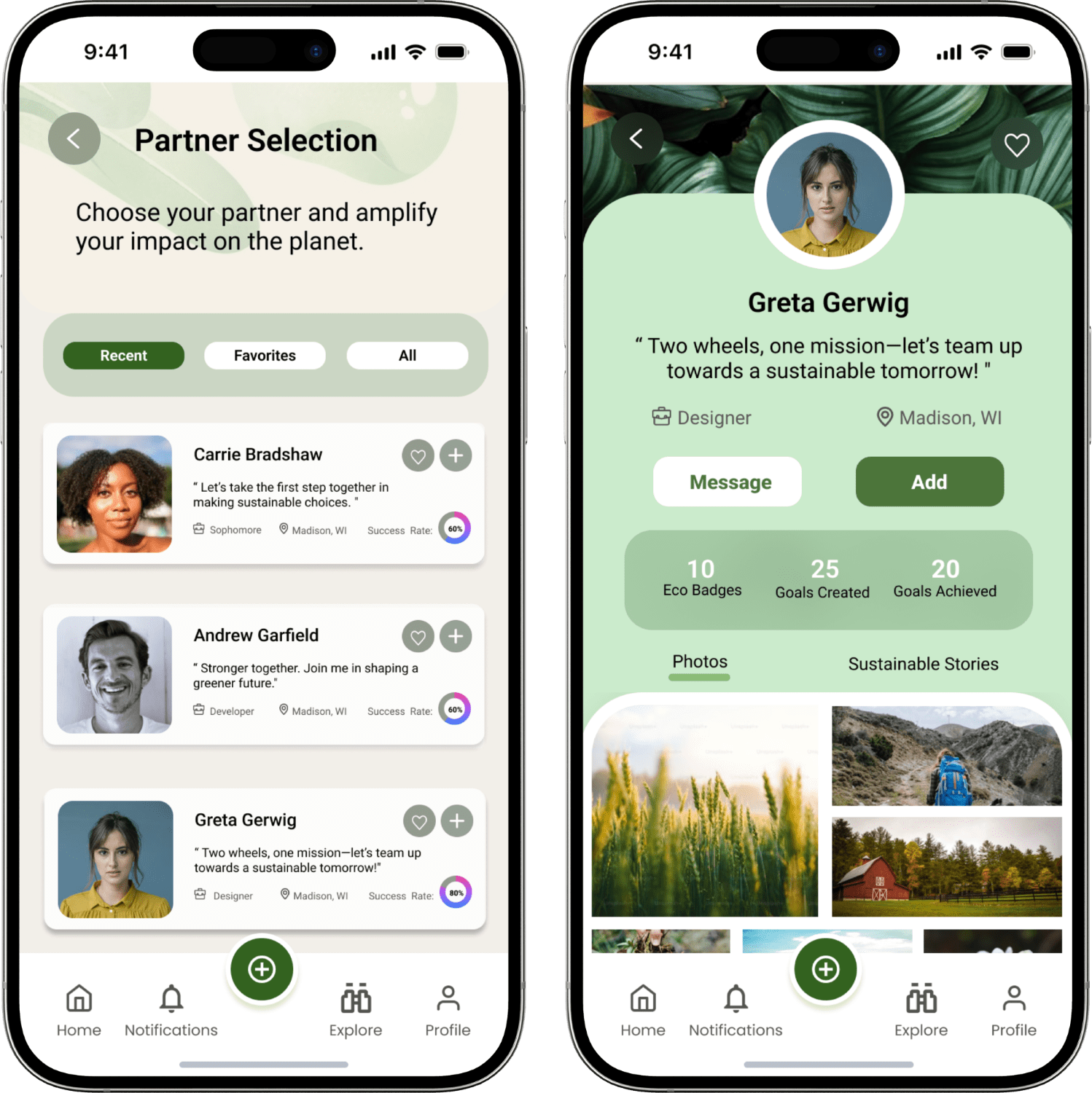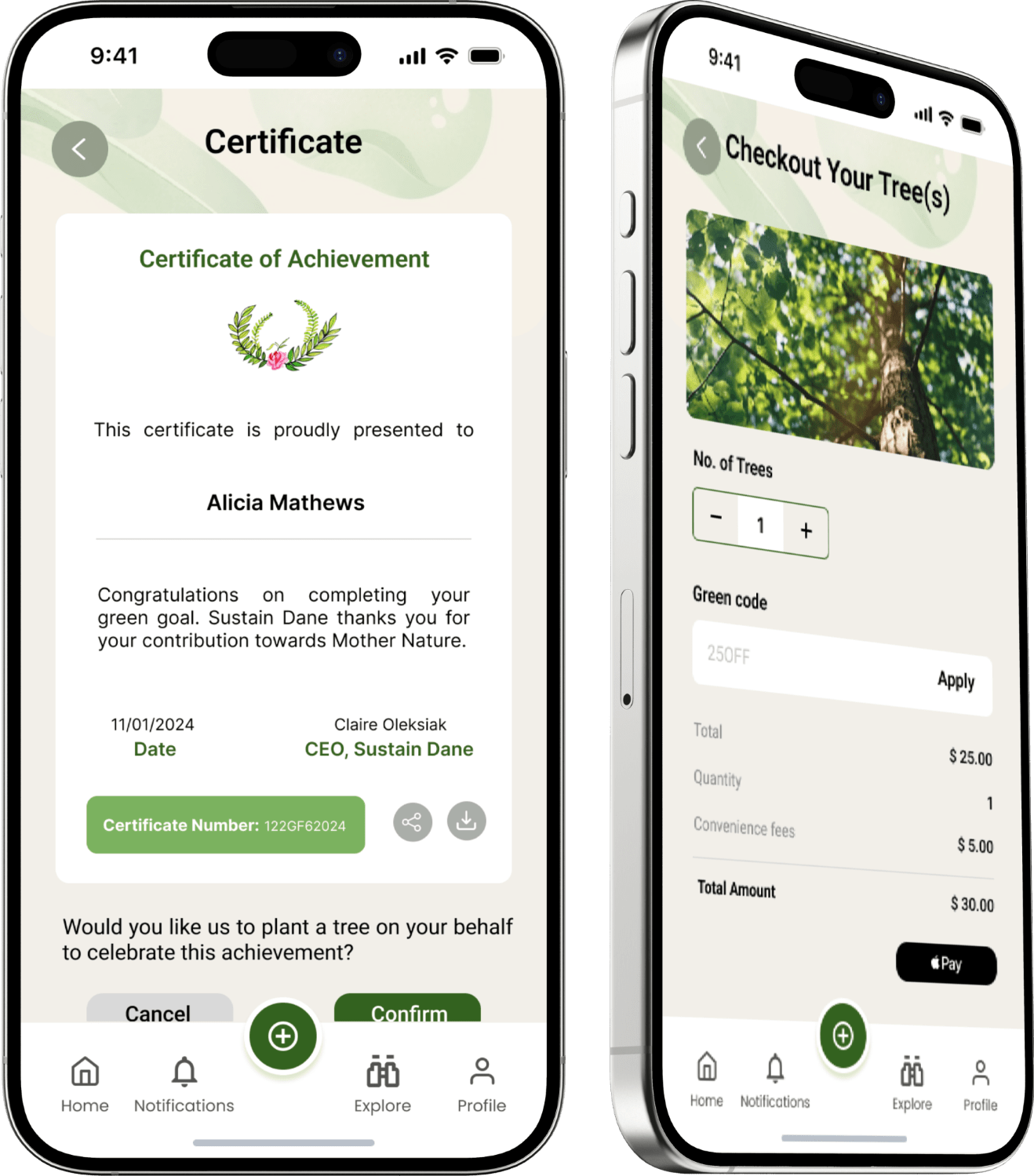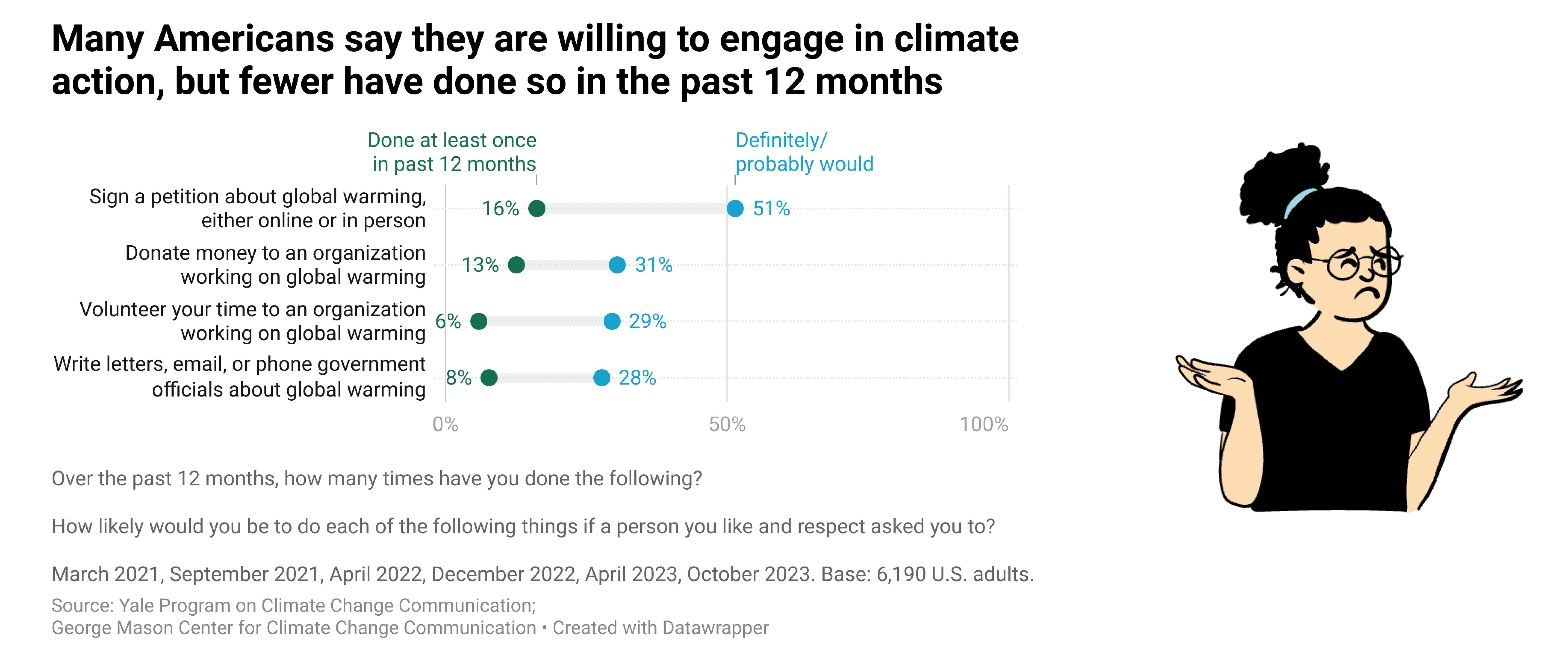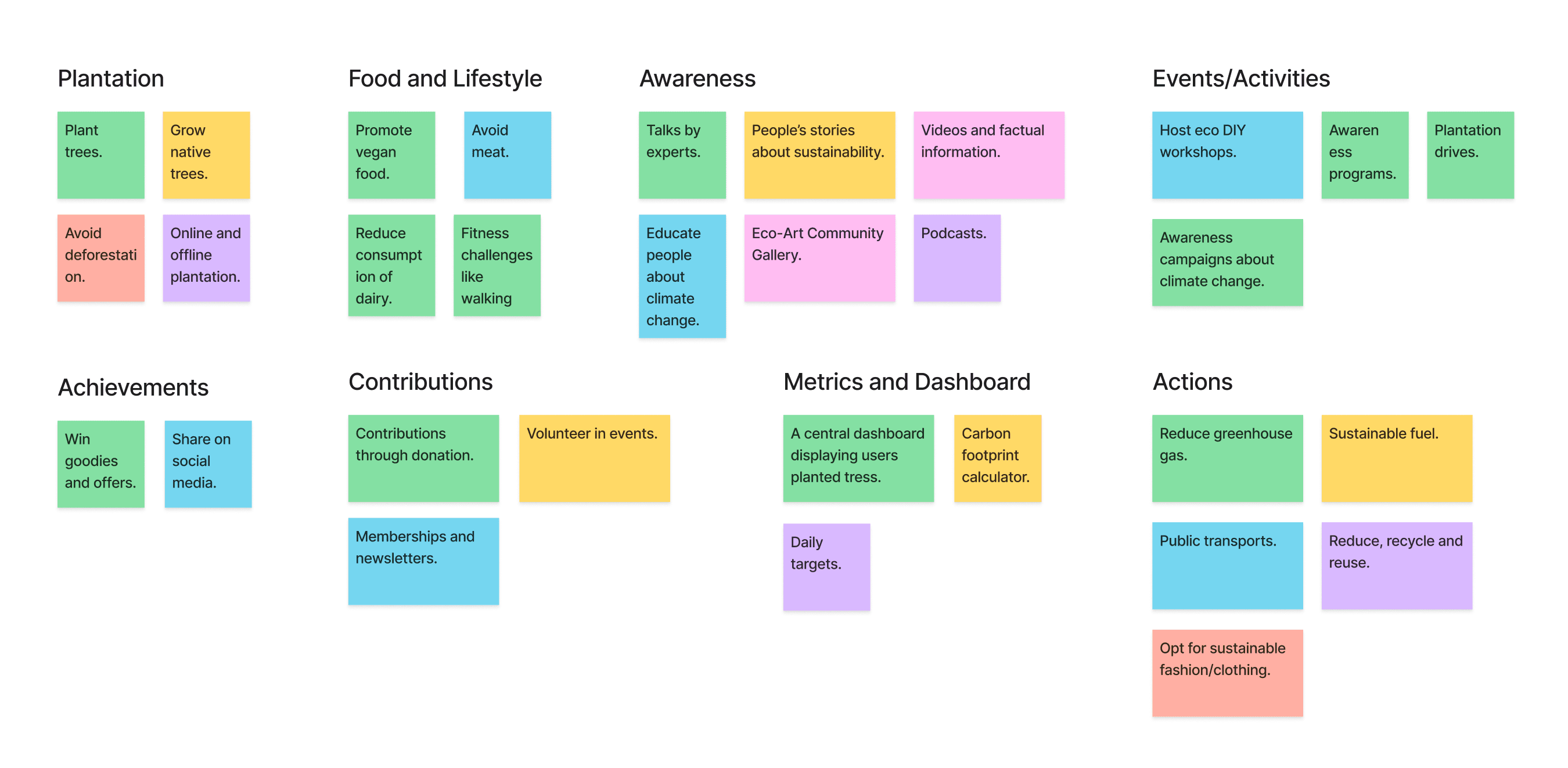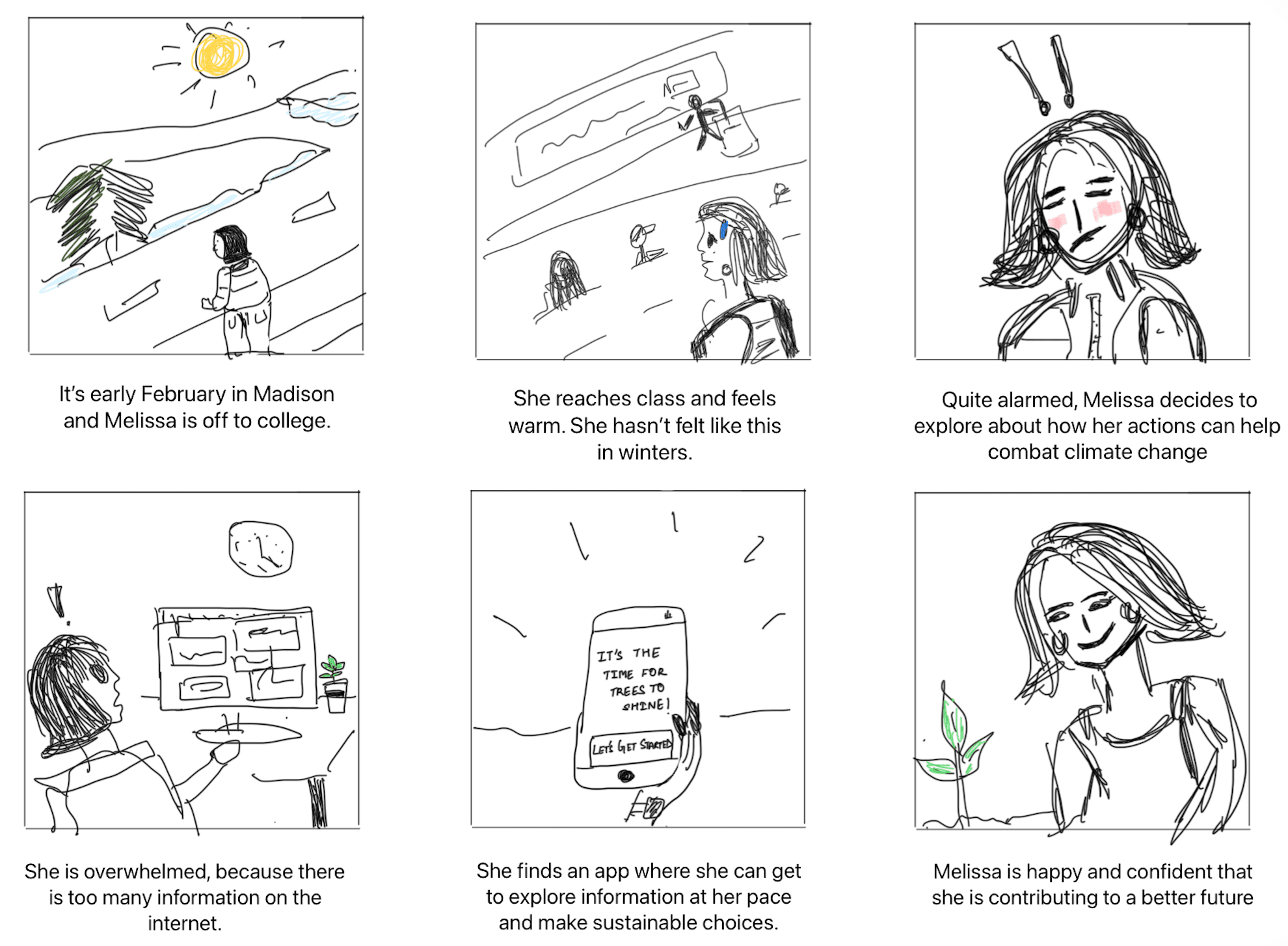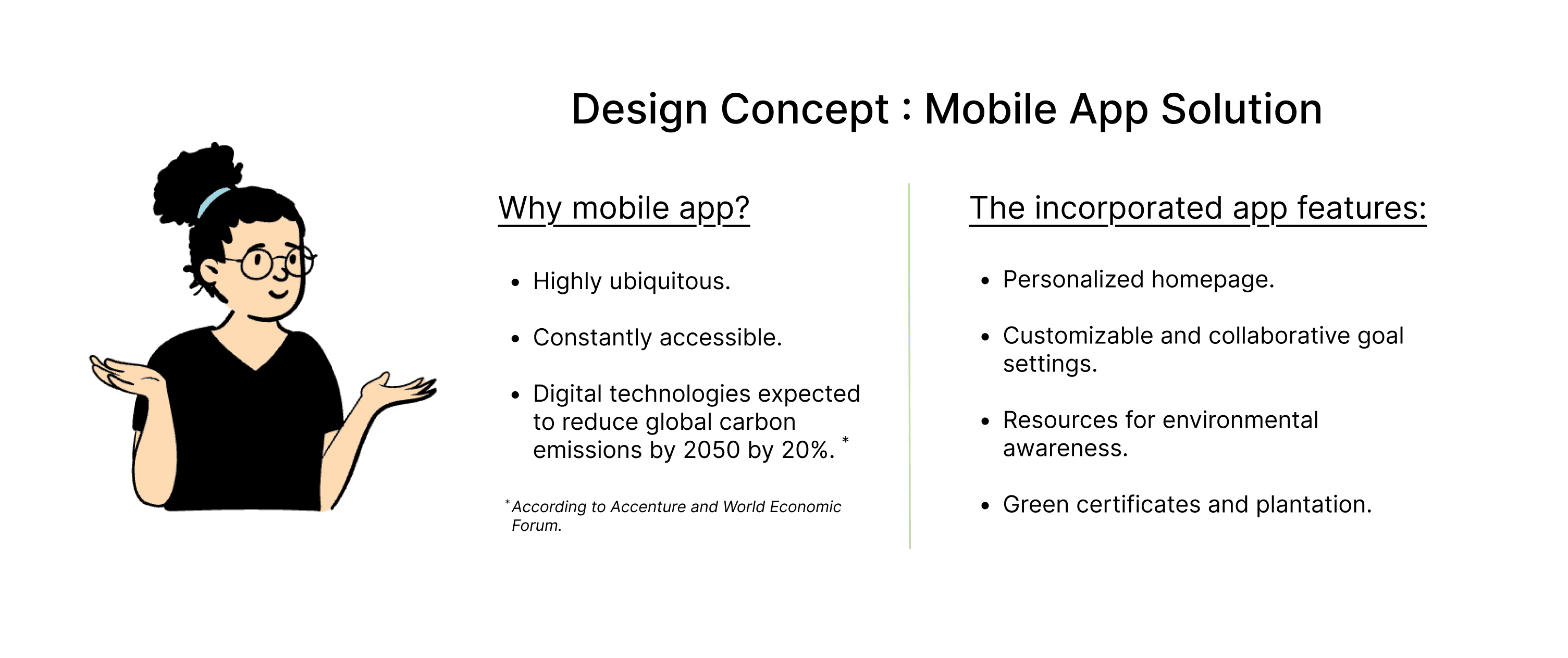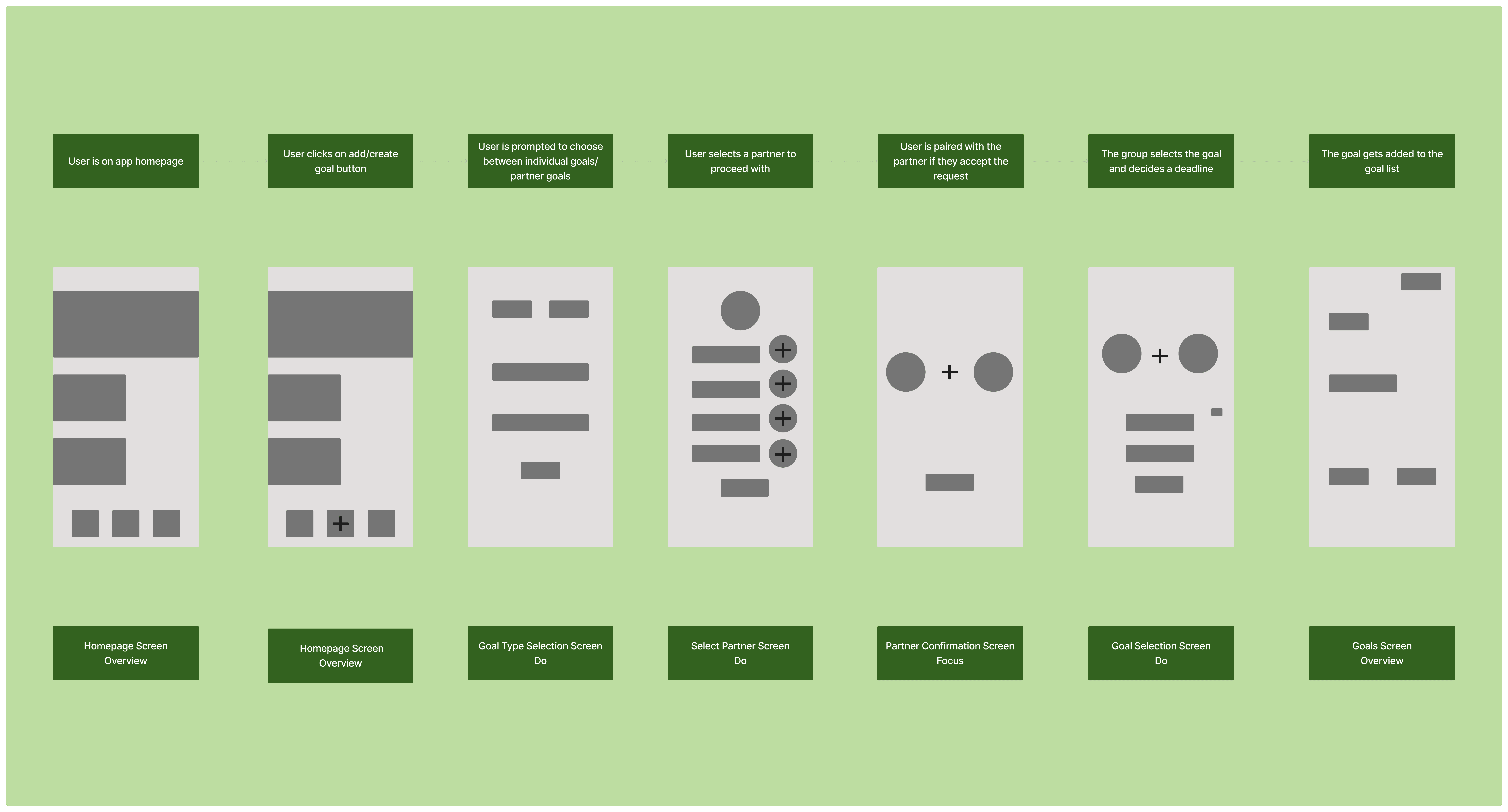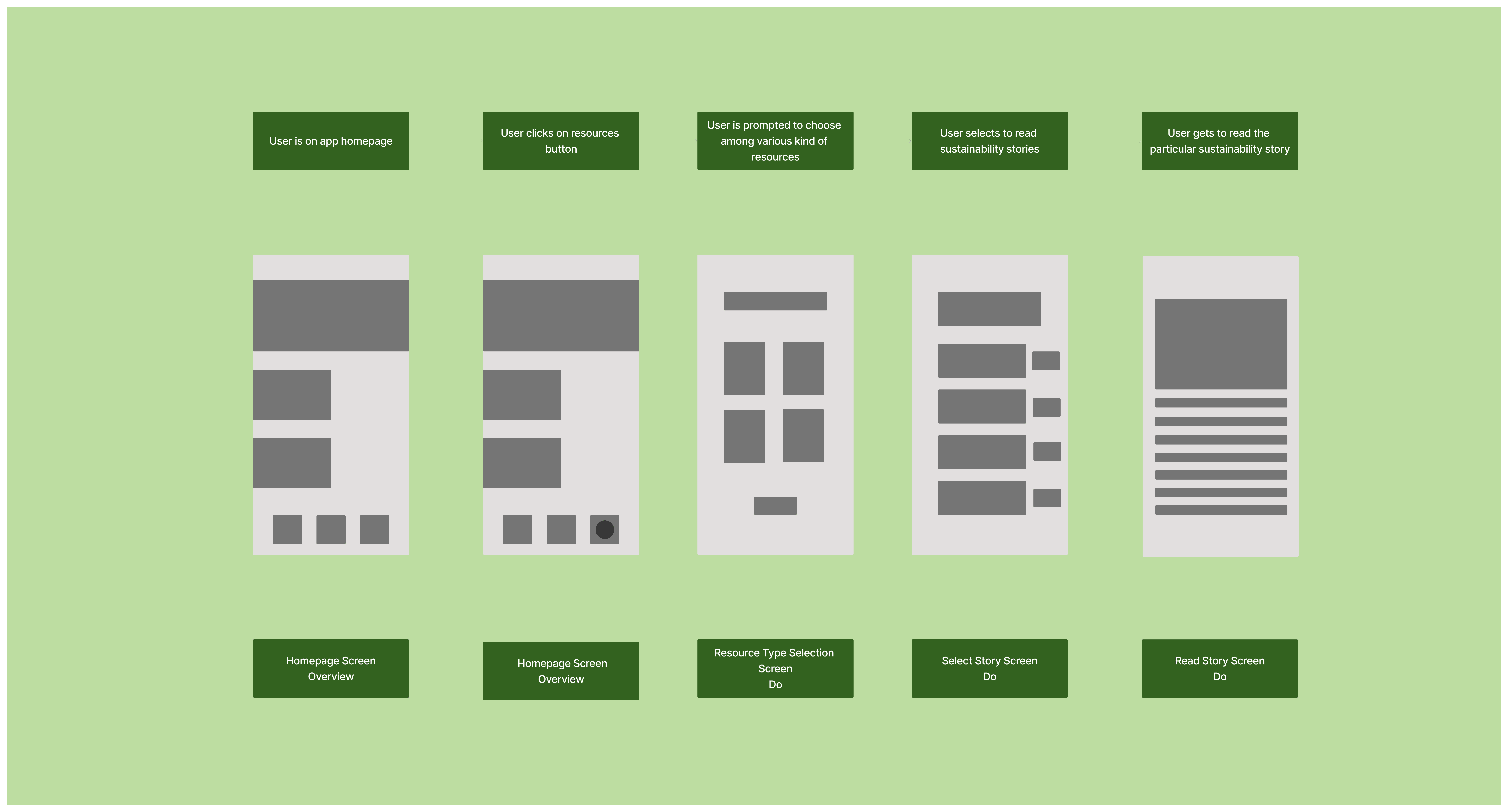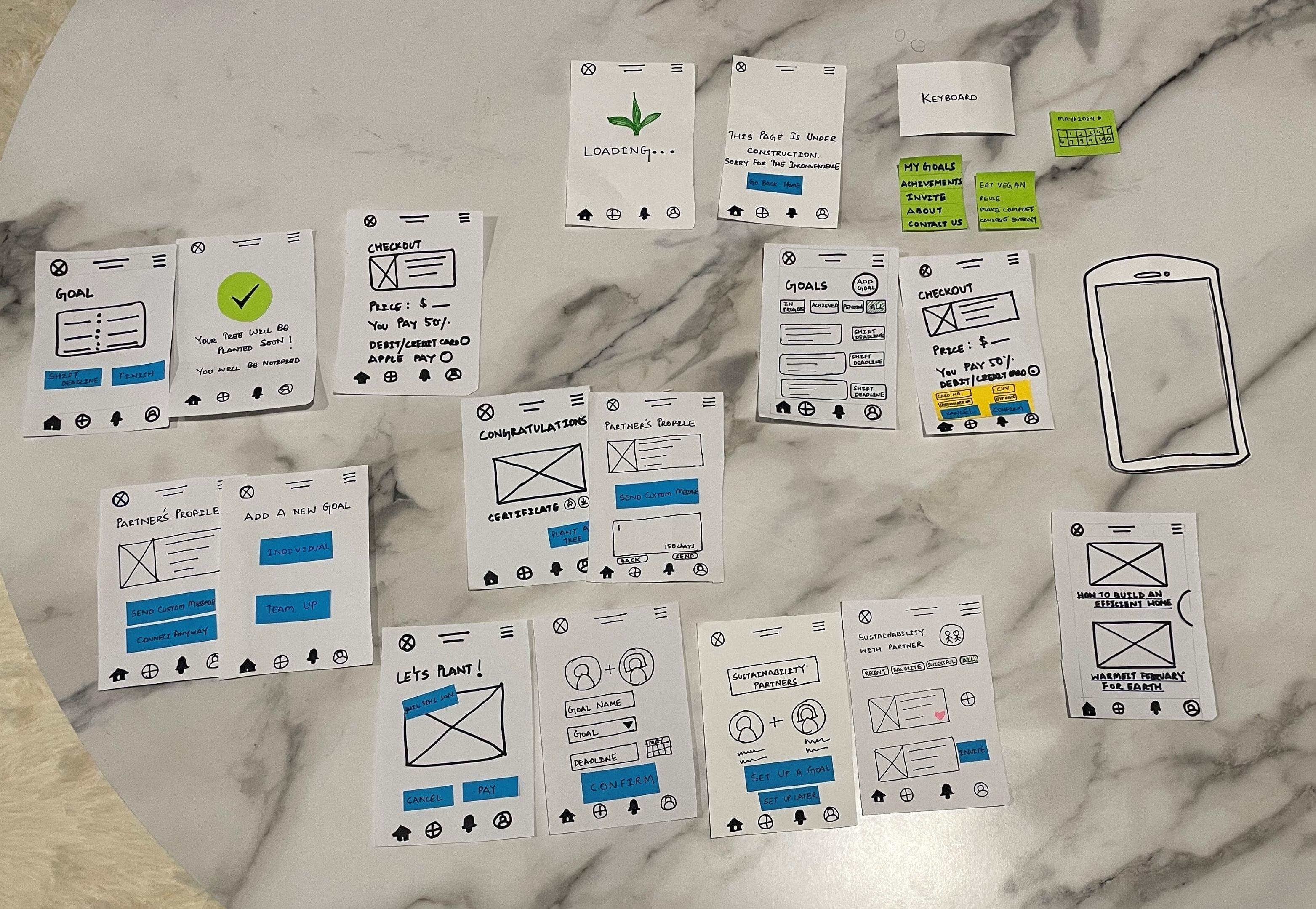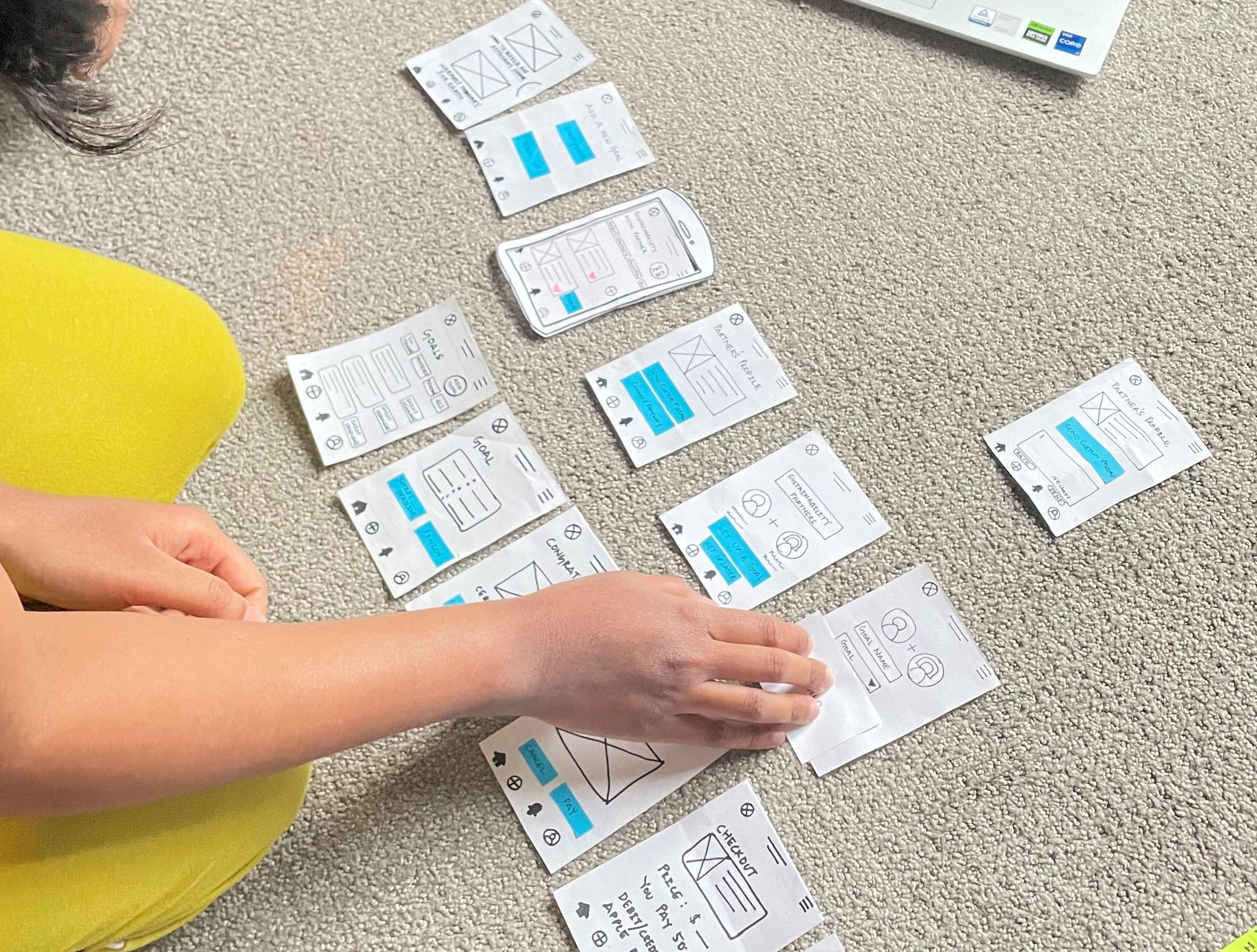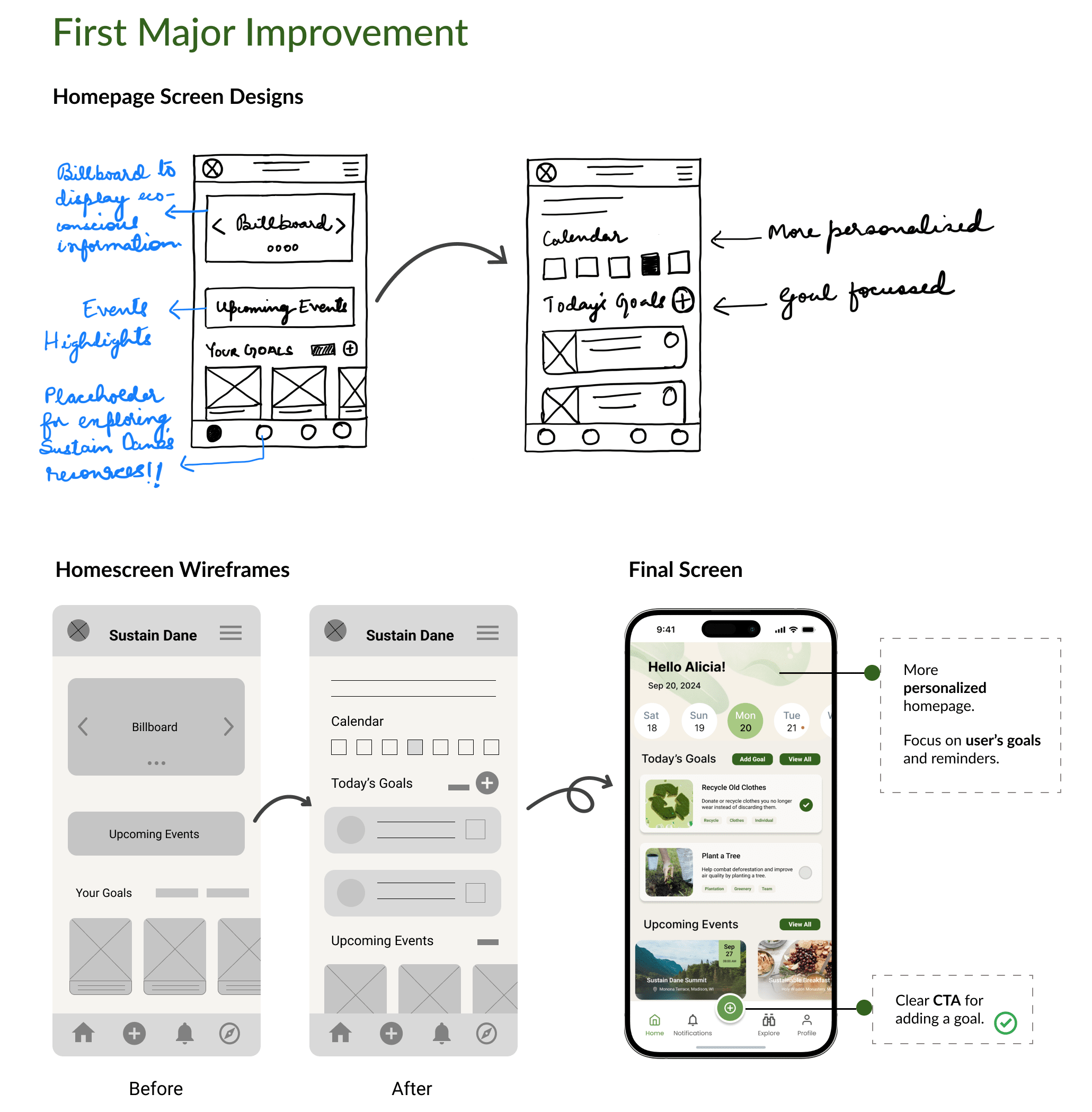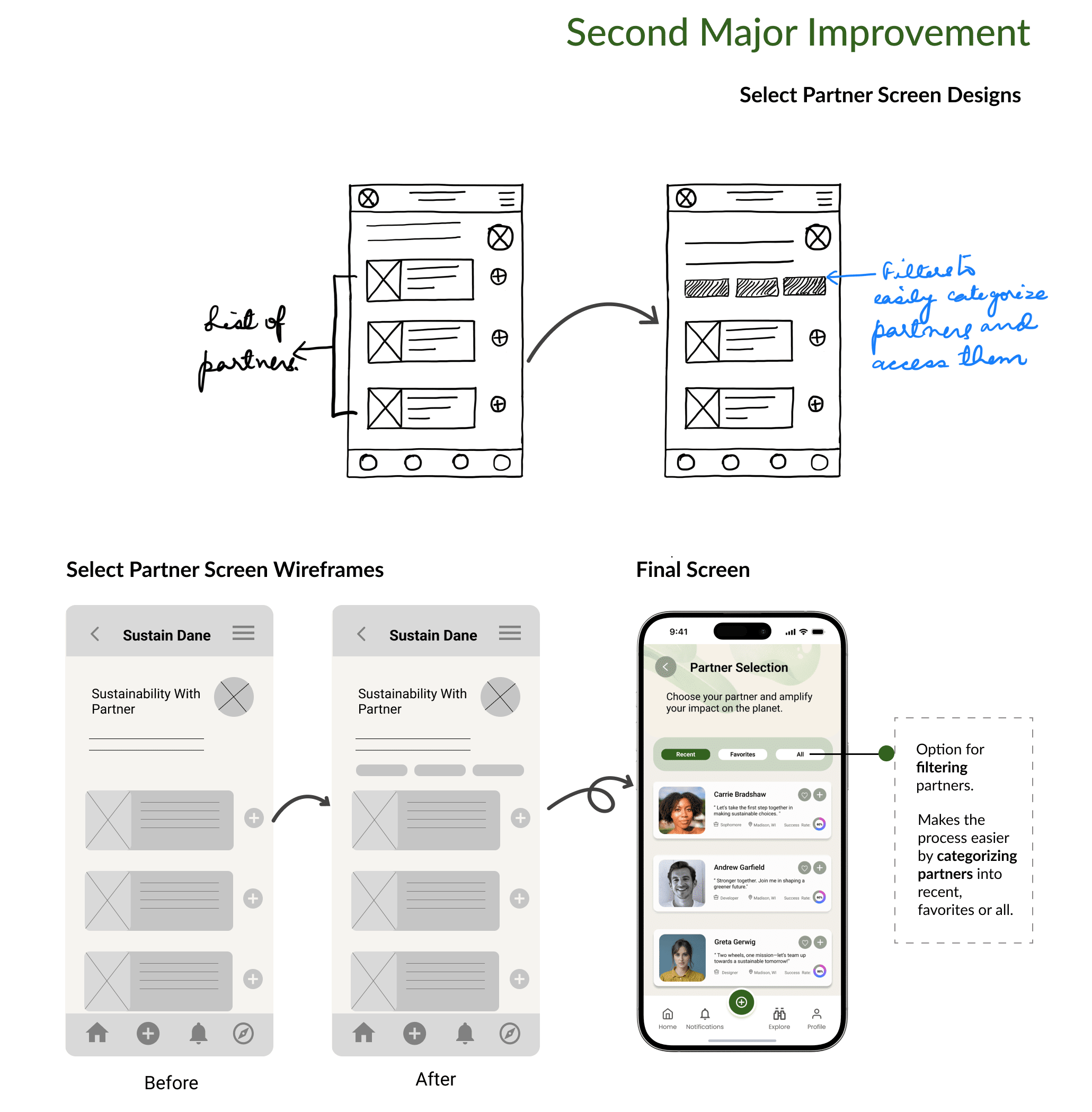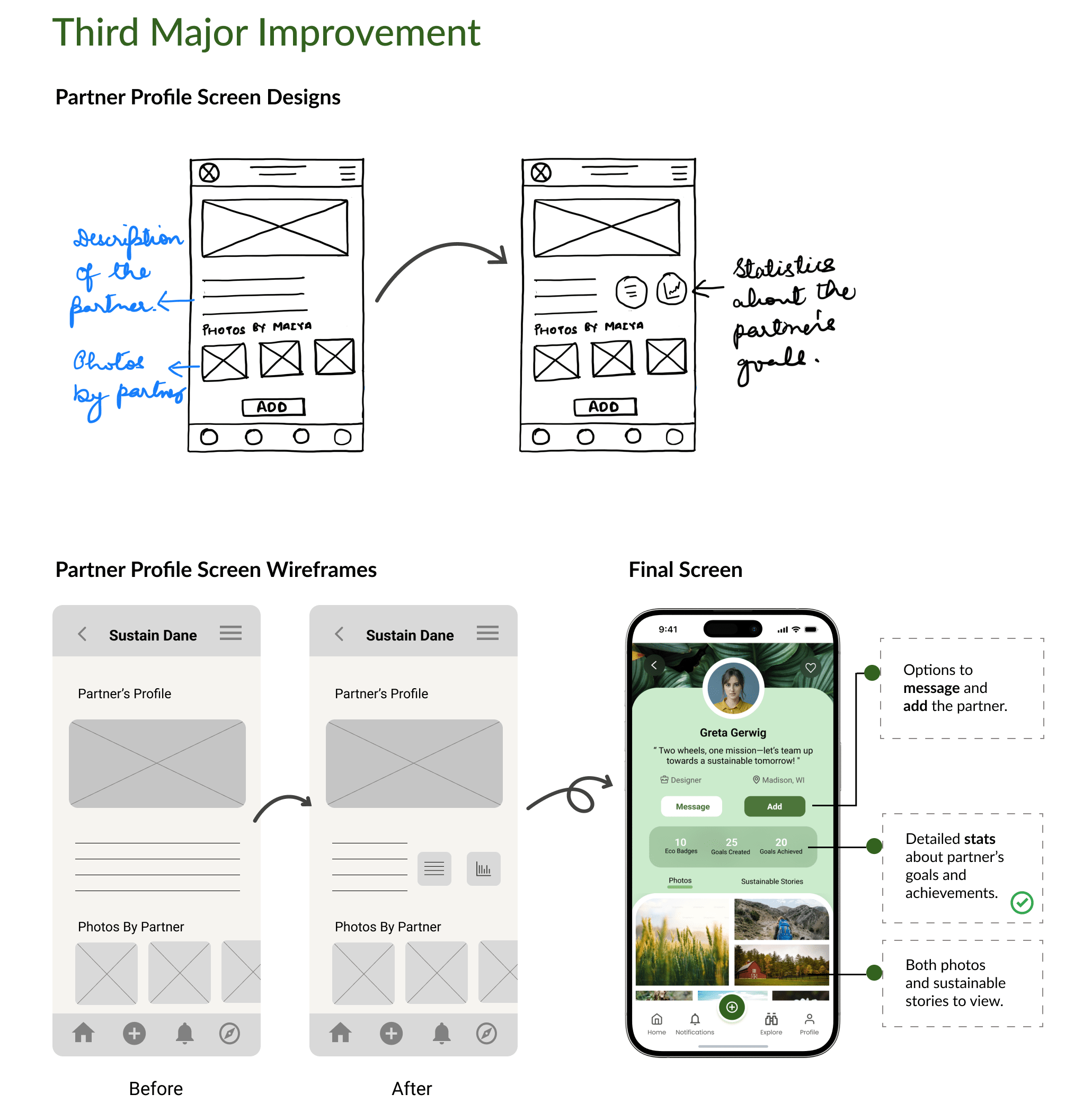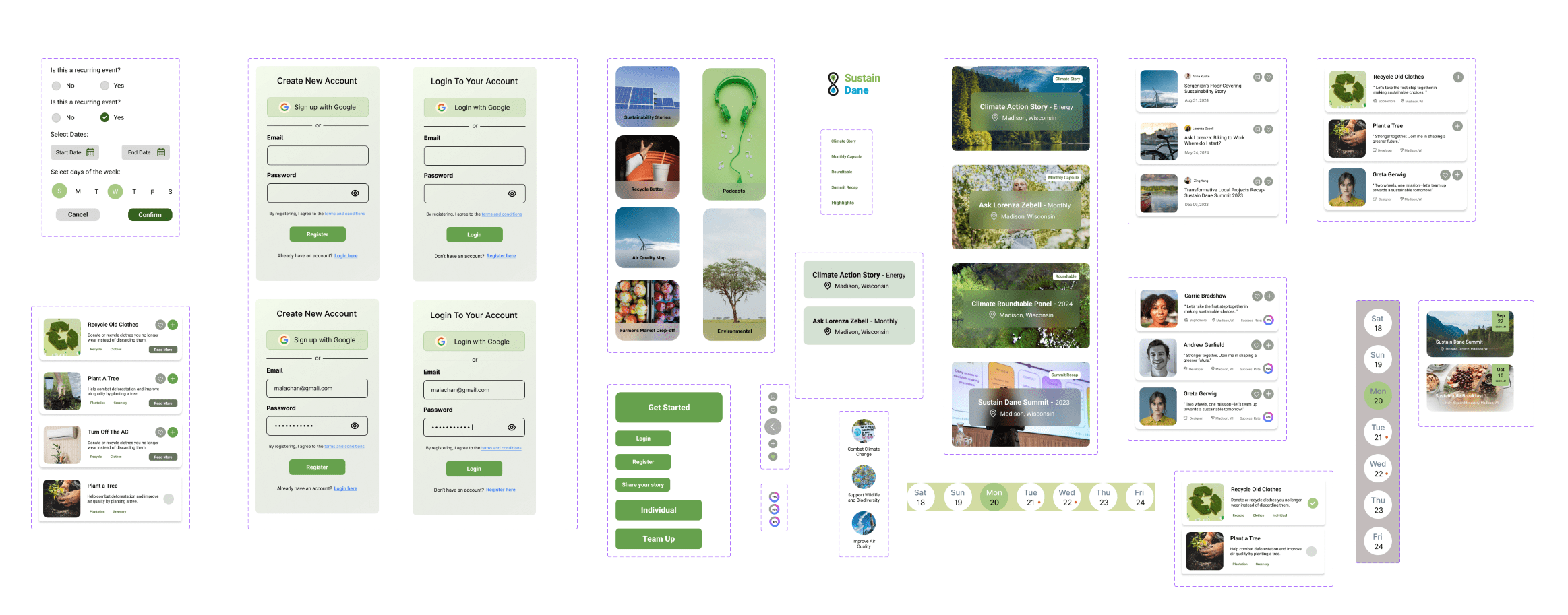

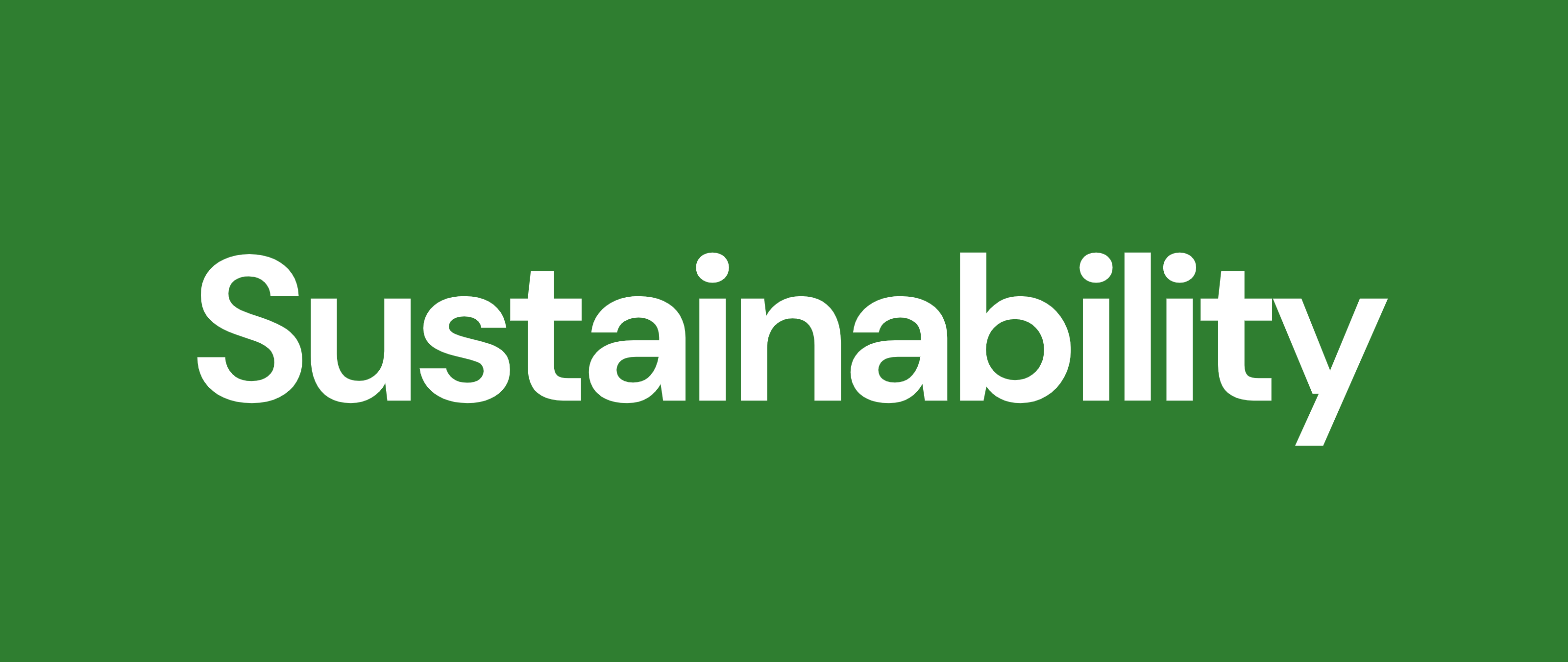
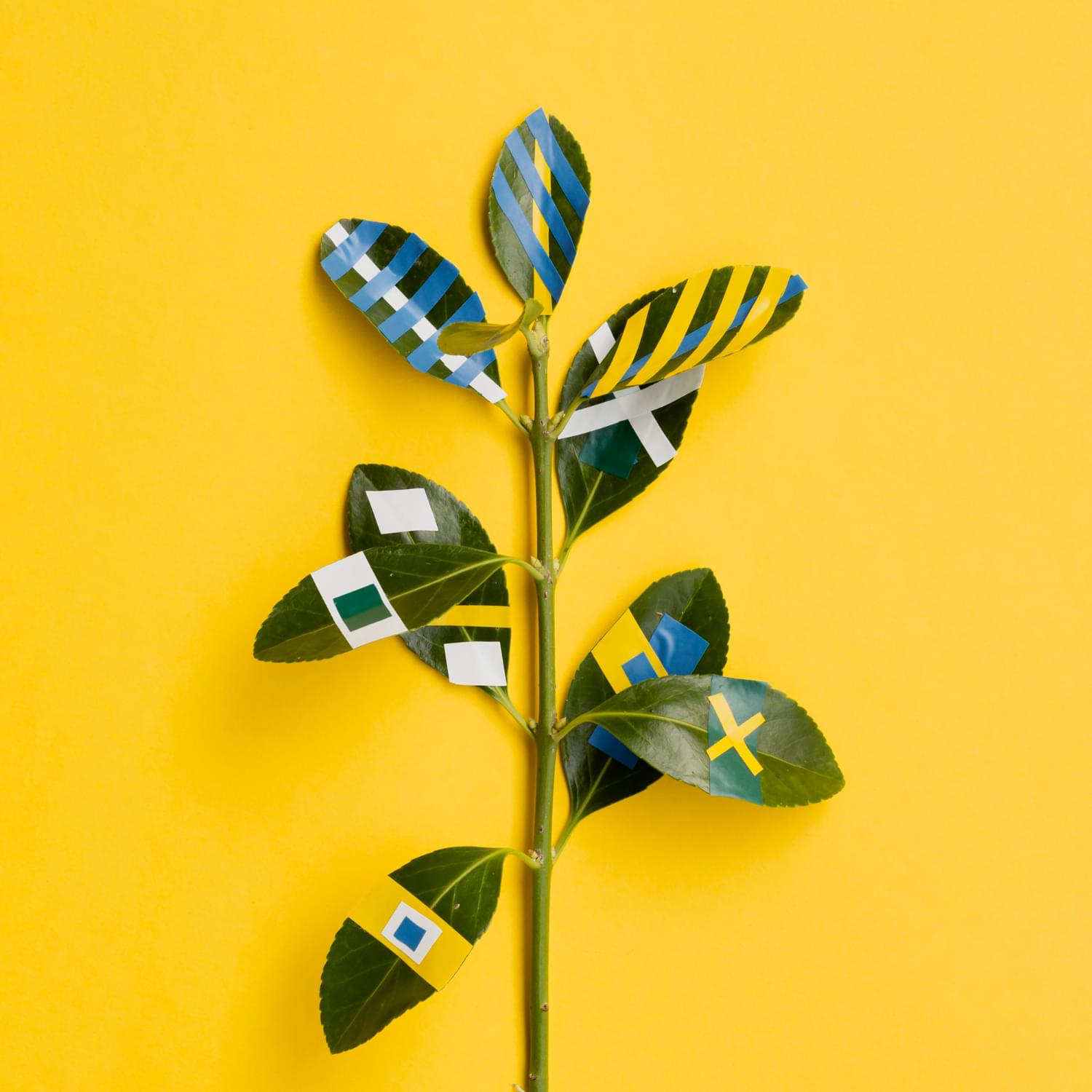
Process Highlight
Design challenge and responsibilities overview
Challenge
Integrate UX principles to develop a platform for Sustain Dane, a sustainability organization serving Dane County, dedicated to fostering environmental consciousness.
Opportunity
Design or reimagine a mobile app for Sustain Dane to encourage users to make sustainable life choices, through collaborative goal setting and environmental awareness.
Background
This solo student project was undertaken within the Information Science program at the University of Wisconsin, Madison, as part of the User Experience Design (LIS 612) Spring course.
Timeline
Jan 2024 - May 2024
Disciplines
UX Research/Design
Paper Prototype
Lo-fi and Hi-fi Prototype
Design System
Role
UX Designer
Tools
Figma
FigJam
Miro
Freeform
Adobe Express
Problem
Our planet is getting alarmingly hot, if not now then when?
Reading articles about climate change and watching the news makes people wonder what they can do about it. Because not everyone has the same resources, opportunities, and abilities to make contributions, the cause gets forgotten and unattended. But the fact that the majority of the population uses digital platforms in their daily lives, the platform itself could be leveraged to encourage people to make simple yet effective contributions.
Solution
Sustainable choices through fun, accountability, and achievement
To promote a sustainable lifestyle, this app design makes sustainable choices engaging, social, and rewarding. By integrating education, goal-setting, and a recognition system, users are supported at each stage of their sustainability journey.
Environmental Awareness Hub
- Curated sections like Sustainability Stories and Recycle Better make sustainable information accessible.
- Explore real-life sustainability achievements, fostering inspiration and connection.
- Share personal stories, sort by relevance, and follow content to stay updated and motivated.
Goal setting individually or with a partner
- Set achievable and meaningful goals that fit your lifestyle.
- Team up with friends or community members, enhancing motivation and commitment.
- Set recurring goals or one-time actions.
Research
Desk Research
Research shows a significant gap between people's willingness to support environmental conservation and their ability to take consistent, meaningful action (Yale publication, 2024). While individuals express concern for climate change, various barriers prevent them from translating this motivation into tangible, eco-friendly behaviors.
Research
Secondary Research Insights
I reviewed studies and statistics on environmental and consumer behavior. The major obstacle to climate action includes psychological, social, and structural/logistical factors. On further digging, I found that there are positive numbers that indicate that young people and digital technologies can be the way to a better future.
Major barriers to environmental engagement include lack of:
- Resources
- Opportunities
- Awareness
- Fun and accountability
- Sense of achievement

Research
Competitor Analysis

Pros:
- Actionable Insights: Provides users with specific actions to reduce their carbon footprint.
- Goal Tracking: Allows users to set and track sustainability goals, making it easy to visualize progress.
Cons:
- Limited Community Engagement: Lacks a strong social or community feature.
- Minimal Gamification: Does not effectively use gamification to make sustainability efforts engaging or fun.

Pros:
- Habit-Forming Approach: Uses behavioral science to help users develop long-term sustainable habits.
- User-Friendly Interface: Simple and intuitive interface.
Cons:
- Lack of Goal Customization: Limited flexibility in setting personalized goals.
- No Achievement Rewards: Does not offer badges or rewards for achievements.

Pros:
- Gamification: Uses points, badges, and challenges for competitiveness.
- Social Sharing: Allows users to share achievements with friends.
Cons:
- Overly Complex Navigation: The interface can be overwhelming for new users.
- Limited Educational Resources: Focuses heavily just on gamification.
"...so far, with all the insights, I realised that providing collaboration, awareness, and encouragement in one platform was the key. This established the inception of my design solution."
Research
Affinity Mapping
Further, I conducted an affinity mapping session to organize and synthesize the key themes that emerged. This process aimed to identify actionable ideas that addressed user motivations, barriers, and gaps in existing solutions.
Research
Generating Insights
Through a detailed analysis of brainstormed ideas across themes like plantation, food and lifestyle, achievements, and metrics, I identified three core insights that could enhance user engagement in everyday environmental actions. These insights focus on collaboration, awareness and a sense of accomplishment.
Collaboration and Accountability for Motivation
Users can set individual or team goals with deadlines.
Awareness to Drive Informed Choices
Providing environmental knowledge through articles, stories, and accessible resources.
Sense of Achievement as a Motivational Reward
Recognizing users' efforts through rewards, such as digital certificates, goodies, and offers.
Research
Defining the Problem
The complete understanding of the situation helped me frame the "how might we" statement to narrow down my problem statement. It focuses on making the process of making an environmental impact more personal and fun.
How might we make people more aware of climate change issues through a digital platform so they make more sustainable life decisions in a fun yet accountable way?
Synthesis
Storyboard
I sketched a storyboard to depict the problem inspired by a personal incident while living in Madison. This was when I experienced relatively higher temperatures in February which is usually not the case. This motivated me to contribute more towards the design solution I was trying to accomplish.
With a beginning, middle, and end, my storyboard stated the problem, a solution, and a final state.
Synthesis
User Persona
I developed this user persona to represent the primary user of the Sustain Dane Sustainability App. Julia's profile embodies the needs, challenges,and aspirations of eco-conscious individuals seeking to make a positive environmental impact.
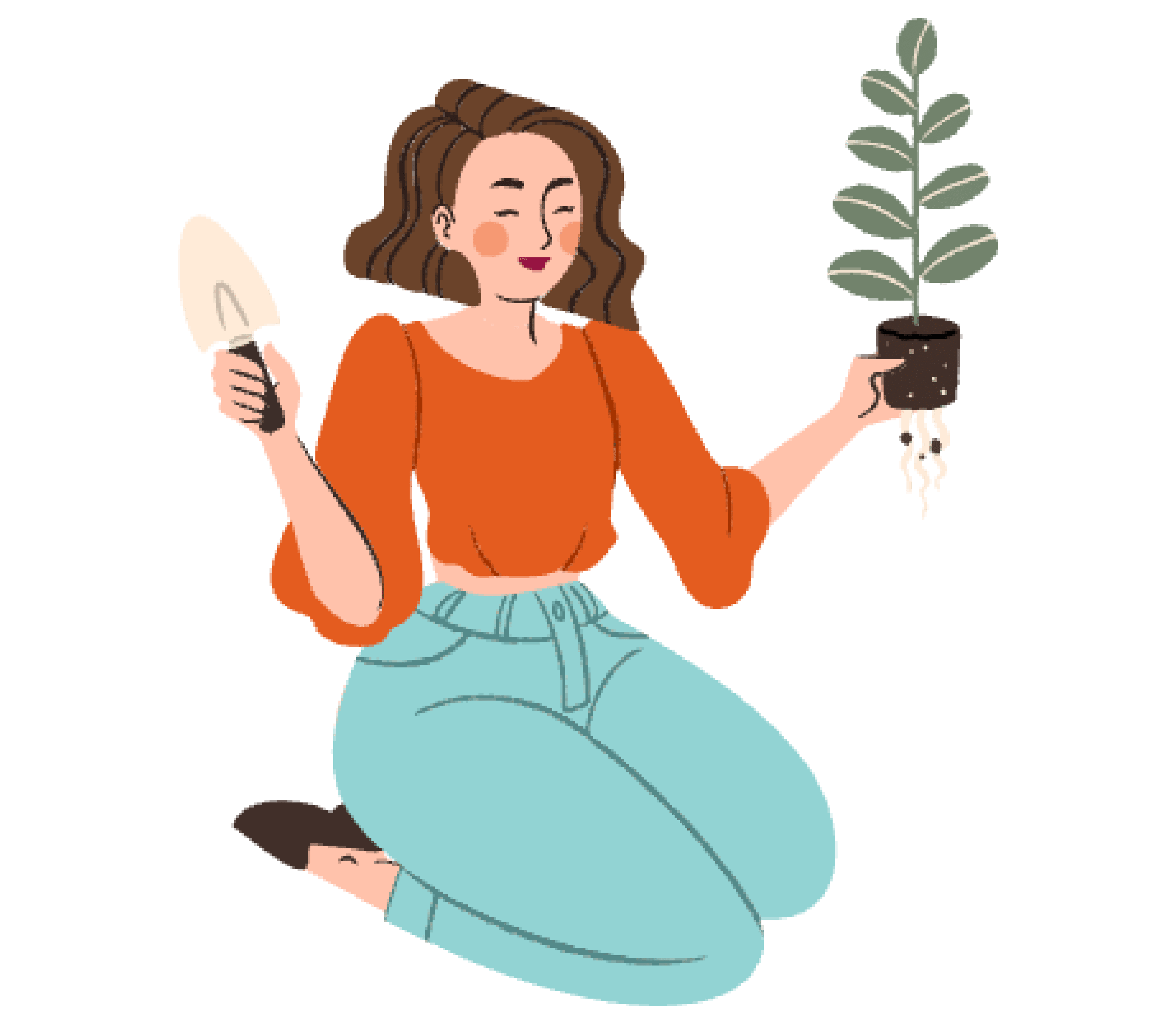
Julia Green, 30
Julia is an eco-conscious professional who wants to incorporate sustainability into her lifestyle but often feels uncertain about the impact of her actions.
Goals
- To incorporate small, impactful eco-friendly actions into her lifestyle.
- To connect with a community of like-minded individuals.
- To track her environmental impact and feel rewarded.
Frustrations
- Struggles to find reliable resources that simplify eco-friendly choices.
- Feels isolated in her sustainability journey due to a lack of community support.
- Lacks motivation when her sustainable actions don't feel impactful.
Motivations
- Community: Being part of a network of eco-conscious individuals.
- Accountability: Setting and achieving sustainability goals with a partner.
- Recognition: Receiving tangible rewards or acknowledgment for her efforts.
Ideation
Task Flows
Following the research and synthesis of my design problem, I quickly proceeded to create 3 task flows that closely fulfill the idea of creating a sense of contribution, achievement, and awareness.
Ideation
Paper Prototype
I rapidly contructed paper prototype with some initial screen designs. I tested the prototype with 3 participants. There were quite a few problems that got attention to while testing.
Major problems and requirements with the paper prototype included:
- Lack of personalization on homepage.
- Statistics about partner's performance.
- Need of filters/categorization for partners.
- Unable to involve in the shared stories.
"...with paper prototype test, I quickly realised the faults in my designs. It helped in iterating my designs for a better user experience."
Ideation
Testing and Improvements
With the paper prototype test of the screen designs, I made a few major changes in my initial design solution. I took into account the feedback from the testing and incorporated those changes into the screen designs and wireframes. The iterative design changes helped me in creating the final screens which reflected users needs efficiently.
Homescreen lacked personal touch and a clear CTA
- Participants felt the need of a more personalized homescreen where they could easily access their goals.
- They felt that the homescreen was more events focused.
- Participants also got confused with how to take an action for creating a goal, indicating the need for a clear CTA
Improvements on homescreen
- Clear CTA (call for action) on homescreen to create new goals.
- Users's goals on front and top for a personalized touch with greetings.
- Events section shifted at the bottom according to users preference of content
Select partner page lacked clear organization
- Participants struggled to identify or quickly find the right partner.
- Users had trouble browsing or filtering through multiple partners.
Improvements on select partner screen
- I introduced filters (e.g., Recent, Favorites, All) so users can quickly jump to the relevant partner list.
- By allowing users to categorize and rearrange partners, they can easily see top or most-used partners first.
Partner's profile screen needed more insights
- Participants wanted to see detailed insights about a partner's sustainability goals and progress
- They needed as well, a straightforward way to connect with the partners.
Improvements on partner's profile screen
- I added numerical indicators (e.g., total goals, goals achieved) for quick at-a-glance understanding.
- A prominent Message button makes it easy to reach out and collaborate.
- Partners can upload images or share Sustainable Stories, giving users tangible proof of their impact.
Final Designs
High Fidelity Prototype
The final stage consisted of designing the mockups. With multiple design iterations and feedback I worked on creating the final mockups. I focussed on curating an experience that was clear and easy to follow. Below are the final mockup designs for the task flows.
Final Designs
Design System
To streamline the process, I built Figma components and variants using auto-layout for all UI elements, including cards, buttons, and dropdown menus. This component-based approach allowed for efficient design updates and ensured consistency across the application, supporting smooth collaboration between design and development.
Reflection
Learnings
The entire journey of designing the UX for the Sustainability mobile app platform taught me to take a holistic approach to designing solutions to contribute to the climate crisis. Providing users with personalized experiences motivates them more to accomplish a goal. From a design perspective, information architecture plays a very vital role in defining the entire design journey.
Reflection
Next Steps
If I Had More Time: For future work and enhancement, I would like to further incorporate a few features in the app:
- A way to track the carbon footprints of each user.
- A better visualization of the contributions through dashboards and graphs.
- Implement the gamification feature to earn eco-badges.

